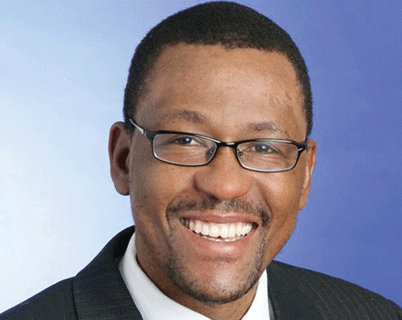
THE positive reaction by urban councils to a suggestion by Transport and Infrastructural Development minister Obert Mpofu to establish tollgates presents an opportunity for the two levels of government to work together in developing a national long-term transportation infrastructure and traffic management plan.
Kuthula Njokweni
Urban councils, as institutions closest to people providing direct transportation infrastructure and traffic management, have a very good understanding of the challenges they face: Antiquated transportation infrastructure, congested road networks and a narrow base of revenue.
Urgent action needs to be taken and urban councils agree. Central government appears to understand the crisis and has suggested erecting tollgates as part of a strategy to get urban councils and their residents to contribute to the national effort of establishing transportation infrastructure and managing traffic.
The upgrading of the urban transportation infrastructure will complement the national highways network so that both can handle traffic coming from the other seamlessly.
Mpofu needs to harness this common understanding to develop a strategic working relationship with urban councils and other stakeholders, such as Finance, Local Government, Science and Technology ministries, and so forth.
This relationship will develop a long-term plan for urban councils that articulates transportation infrastructure and traffic management priorities.
The plan will determine the principles that will guide this strategic plan, establish priority areas of focus and national standards, identify funding sources and clearly spell out roles and responsibilities of all stakeholders.
- Chamisa under fire over US$120K donation
- Mavhunga puts DeMbare into Chibuku quarterfinals
- Pension funds bet on Cabora Bassa oilfields
- Councils defy govt fire tender directive
Keep Reading
It will create a framework for co-operation, implementation, and measurement of progress of the programme.
The paying public will have a clear, documented long-term plan that can be measured against results to make sure that the full cost drivers pay for using infrastructure and other citizens’ tax is invested wisely.
The guiding principles and national standards will ensure all urban councils develop in a consistent fashion in their own unique circumstances.
Some of the principles could include the efficient movement of people and goods, promote security and safety of citizens, promote economic growth and environmental protection.
A precursor to the strategic plan is a growth management policy, which will act as a guideline for urban councils in establishing their transportation infrastructure and traffic management programmes.
The growth management policy, which might come from the Local Government ministry, with input from the Transport and Infrastructural Development ministry, will spell out issues such as efficient use and management of land and infrastructure, and protection of the environment and resources in the course of development projects.
The growth management policy will also require that urban councils establish a multimodal transportation system.
Urban councils will be required to develop their own strategic plans and transportation master plans indicating how they will proceed in establishing and financing transportation infrastructure development and traffic management programmes.
Their strategic plans should be consistent with the national strategic plan and local community plans.
The strategic planning process will give the paying public an opportunity to express their views and have them incorporated in designing the strategic plan.
It is important for the paying public to be involved in this process because it is a plan that will determine the future structure of the transportation infrastructure and traffic management.
The current situation is untenable and evidence is all around us. Only an irresponsible government and citizens will sit back and do nothing.
However, this is an unfamiliar situation for many Zimbabweans and they have the right to feel uneasy, especially with a concept such as paying full costs for using the infrastructure.
In fact, a study just released by the Conference Board of Canada, a research organisation shows that Ontario drivers understand their obligations in the establishment and maintenance of transportation infrastructure.
They argue forcefully that they do pay the full cost of driving despite a general belief that they don’t.
It is possible for Zimbabwe to move towards establishing world-class transportation infrastructure and traffic management systems.
There are many jurisdictions that have faced similar challenges such as Zimbabwe and they have succeeded in attaining world-class standards in traffic management and transportation infrastructure development.
One such is New York, which suffered urban decay in the late 1970s and 1980s.
However, over the years, New York has reinvented itself using a collaborative strategic planning approach.
The city’s strategic plan states: “This plan lays out a vision for New York City of improved mobility, safer streets and reduced impact on global climate, all resulting in a world-class quality of life.”
Zimbabwe does not need to be like the US to excel in transportation infrastructure and traffic management. We only need the national will and a plan to implement successfully.










